Serving 968 students in grades 6-8, Martin Middle School ranks in the top 30% of all schools in North Carolina for overall test scores (math proficiency is top 30%, and reading proficiency is top 30%).
The percentage of students achieving proficiency in math is 63% (which is higher than the North Carolina state average of 51%). The percentage of students achieving proficiency in reading/language arts is 66% (which is higher than the North Carolina state average of 50%).
The student:teacher ratio of 16:1 is higher than the North Carolina state level of 15:1.
Minority enrollment is 54% of the student body (majority Asian and Black), which is lower than the North Carolina state average of 57% (majority Black and Hispanic).
Quick Stats (2025)
- School Type: Magnet School
- Grades: 6-8
- Enrollment: 968 students
- Student:Teacher Ratio: 16:1
- Minority Enrollment: 54%
- Overall Testing Rank: Top 30% in NC
- Math Proficiency: 63% (Top 30%)
- Reading Proficiency: 66% (Top 20%)
- Science Proficiency: 83% (Top 20%)
- Source: National Center for Education Statistics (NCES), NC Dept. of Education
Top Rankings
Martin Middle School ranks among the top 20% of public schools in North Carolina for:
Category
Attribute
Reading/Language Arts Proficiency
Science Proficiency
Diversity
School Overview
Martin Middle School's student population of 968 students has declined by 10% over five school years.
The teacher population of 61 teachers has declined by 10% over five school years.
School Type
Grades Offered
Grades 6-8
Total Students
968 students

Gender %
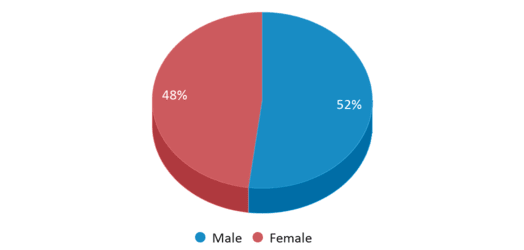
Total Classroom Teachers
61 teachers
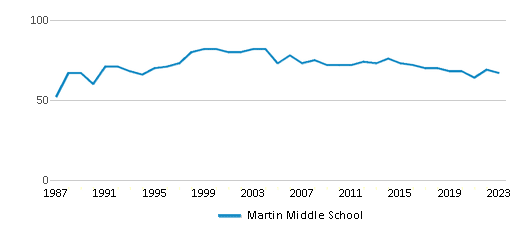
Students by Grade
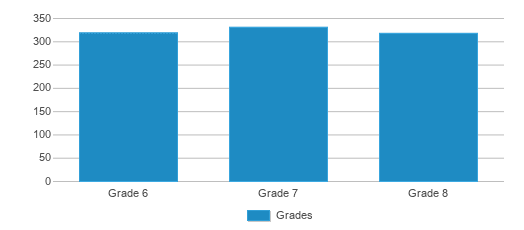
School Rankings
Martin Middle School ranks within the top 30% of all 2,617 schools in North Carolina (based off of combined math and reading proficiency testing data).
The diversity score of Martin Middle School is 0.71, which is equal to the diversity score at state average of 0.71. The school's diversity has stayed relatively flat over five school years.
Overall Testing Rank
#565 out of 2617 schools
(Top 30%)
(Top 30%)
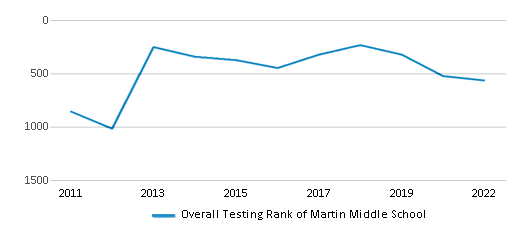
Math Test Scores (% Proficient)
63%
51%
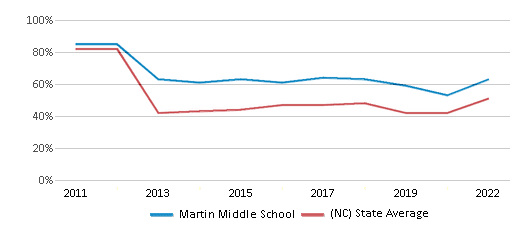
Reading/Language Arts Test Scores (% Proficient)
66%
50%
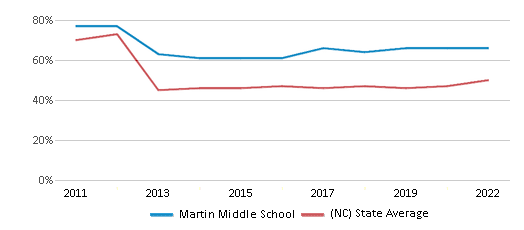
Science Test Scores (% Proficient)
83%
63%
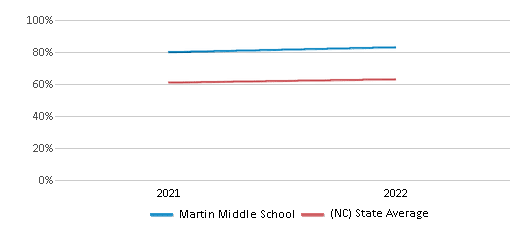
Student : Teacher Ratio
16:1
15:1
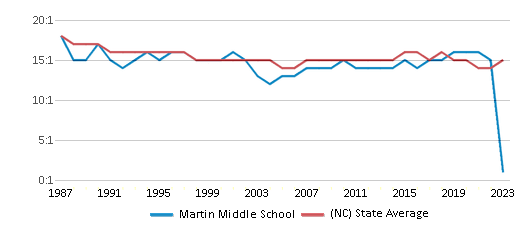
American Indian
1%
1%
Asian
19%
4%
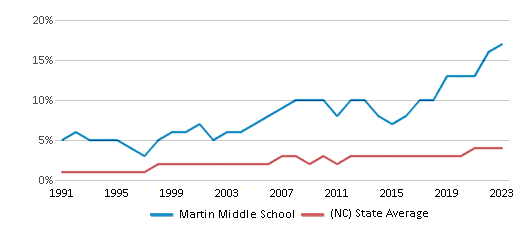
Hispanic
15%
21%
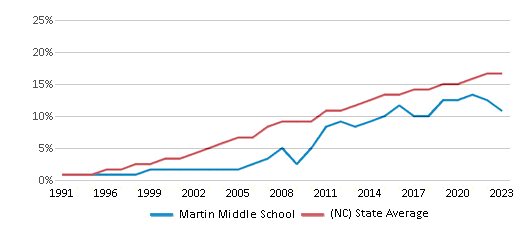
Black
17%
25%
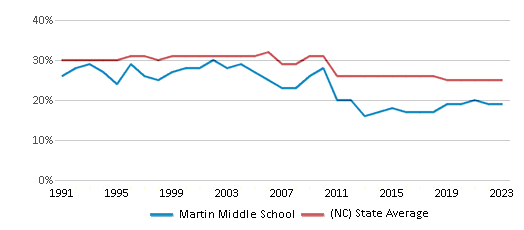
White
46%
43%
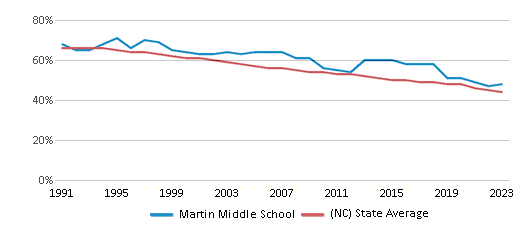
Hawaiian
n/a
n/a
Two or more races
2%
6%
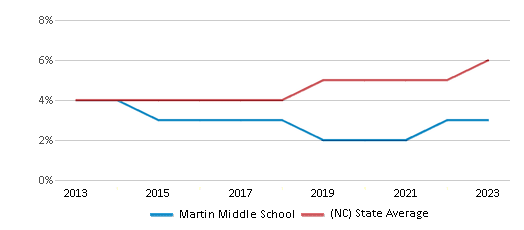
All Ethnic Groups
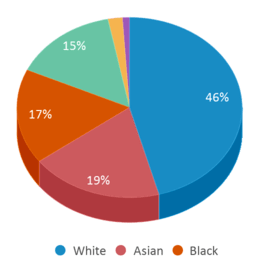
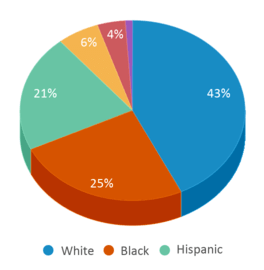
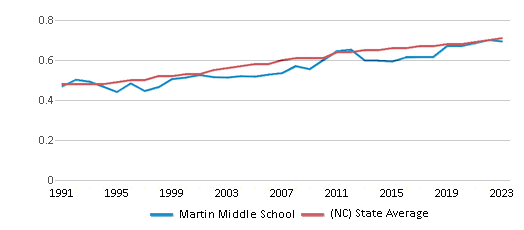
Participates in the National School Lunch Program (NSLP)
Yes
Eligible for Free Lunch
27%
68%
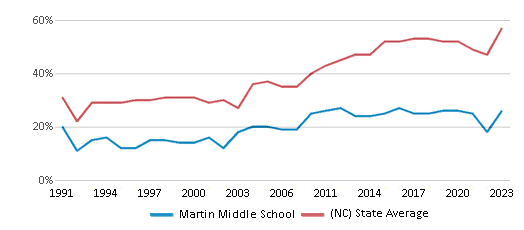
Eligible for Reduced Lunch
1%
1%

School Statewide Testing
School District Name
Source: National Center for Education Statistics (NCES), NC Dept. of Education
Profile last updated: 02/09/2025
Frequently Asked Questions
What is Martin Middle School's ranking?
Martin Middle School is ranked #565 out of 2,617 schools, which ranks it among the top 30% of public schools in North Carolina.
What schools are Martin Middle School often compared to?
Martin Middle Schoolis often viewed alongside schools like Carnage Middle School by visitors of our site.
What percent of students have achieved state testing proficiency in math and reading?
63% of students have achieved math proficiency (compared to the 51% NC state average), while 66% of students have achieved reading proficiency (compared to the 50% NC state average).
How many students attend Martin Middle School?
968 students attend Martin Middle School.
What is the racial composition of the student body?
46% of Martin Middle School students are White, 19% of students are Asian, 17% of students are Black, 15% of students are Hispanic, 2% of students are Two or more races, and 1% of students are American Indian.
What is the student:teacher ratio of Martin Middle School?
Martin Middle School has a student ration of 16:1, which is higher than the North Carolina state average of 15:1.
What grades does Martin Middle School offer ?
Martin Middle School offers enrollment in grades 6-8
What school district is Martin Middle School part of?
Martin Middle School is part of Wake County Schools School District.
In what neighborhood is Martin Middle School located?
Martin Middle School is located in the North Hills neighborhood of Raleigh, NC. There are 7 other public schools located in North Hills.
School Reviews
5 10/31/2015
I came to this school after going to Davis Drive Middle for 6th and 7th grade. This school made the transition very easy and the teachers and administration were very helpful in navigating a large school. The students were very nice and accepted me. Most of the students though were rude an very obnoxious to the teachers. The teachers could definitely punished problem students more. Overall this school was much better than Davis Drive and would highly recommend it to the Arts student
5 6/20/2014
the school was ok. I went there for all 3 years. The PTA is wonderful and go out of their way to set up a lot of things for us which is very generous of them. Then there are the teachers. A lot of the teachers are wonderful and I love them, but a few i have doubts and feel like they don't care or don't know what they are teaching. The arts programs are amazing and I was in orchestra and chorus and loved it. If your a creative person who seeks to be in any type of art then this school is god for you. If your somenoe is is purely academic and doesnt feel like performing in the arts i"d suggest choosing a different school.
Review Martin Middle School. Reviews should be a few sentences in length. Please include any comments on:
- Quality of academic programs, teachers, and facilities
- Availability of music, art, sports and other extracurricular activities
Recent Articles

What Is A Charter School?
Explore the world of charter schools in this comprehensive guide. Learn about their history, how they operate, and the pros and cons of this educational innovation. Discover key facts about charter schools, including admission policies, demographics, and funding, as well as what to look for when considering a charter school for your child.

10 Reasons Why High School Sports Benefit Students
Discover the 10 compelling reasons why high school sports are beneficial for students. This comprehensive article explores how athletics enhance academic performance, foster personal growth, and develop crucial life skills. From improved fitness and time management to leadership development and community representation, learn why participating in high school sports can be a game-changer for students' overall success and well-being.

February 05, 2025
Understanding the U.S. Department of Education: Structure, Impact, and EvolutionWe explore how the Department of Education shapes American education, from its cabinet-level leadership to its impact on millions of students, written for general audiences seeking clarity on this vital institution.





